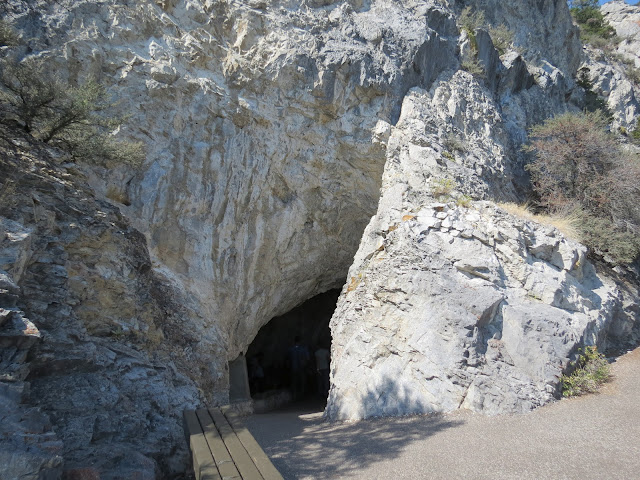Western Meadowlark and Mountain Bluebirds greeted us each morning at the campground.
There are several trails in the park. We decided to try the Greer Gulch Loop Trail which will take us to the top of a ridge and a view of the valley.
But the view is always worth the effort.
We learned that Meriwether Lewis also climbed up here with some effort.
From Lewis' journal:
Sage growing on the ridge.
In the V between the mountains you can see the Visitor's Center for the caverns. That's where we're going next, after our hike.
One more view from the top.
Back through the woods to the trailhead.
This is the where we start the tour to the caverns, a signature feature of this state park.
More critters we watched for but did not see.
Why Lewis and Clark were hungry.
Oh, I didn't realize there was another hike involved to get to the cavern. Can you see the trail we have to walk? Hmmm...
Here we go. It's uphill to the entrance. Then we descend inside the cavern through a series of levels and emerge at the bottom. Then we hike back to the Visitor's Center.
Along the trail are things to read and look at while you catch your breath.
Fossils
Or you can just stop and admire the view while your heartrate returns to normal.
Near the top are steps.
Almost there!
Looking back at the Visitor's Center. We'll have to hike back there after touring the caverns.
More about Lewis and Clark. In 1805 they passed in sight of, but did not find the caverns. Their focus was in finding the Shoshone Indians and getting horses to continue their journey across the mountains.
The man-made entrance to the caverns.
This is the natural entrance. Early explorers had to lower themselves by rope and rope ladder to the bottom.
There were some challenging passages to negotiate in the dim light. This one is called the beaver slide. Sit down, duck your head, and slide.
Inside are typical cavern formations...stalagmites and stalactites.
The CCC put in the concrete walkways. Some workers carved their names in the wet cement.
This tunnel was blasted to provide access to a newly discovered "room."
More cave formations.
We go through another blasted tunnel to a man-made exit with two doors built to prevent wind damage inside the cave.
Another thing we learned is that inside the cavern is the safest place in the area to be in the event of an earthquake. My next post will be about an earthquake.
Hope you enjoyed your tour of Lewis and Clark Caverns State Park.






































Hmmm, safety inside a cave during an earthquake. Interesting. Good place to be in a tornado. There's that really neat picture of the blue bird on a stick again. Love it.
ReplyDeleteI did! (enjoy it that is)
ReplyDelete